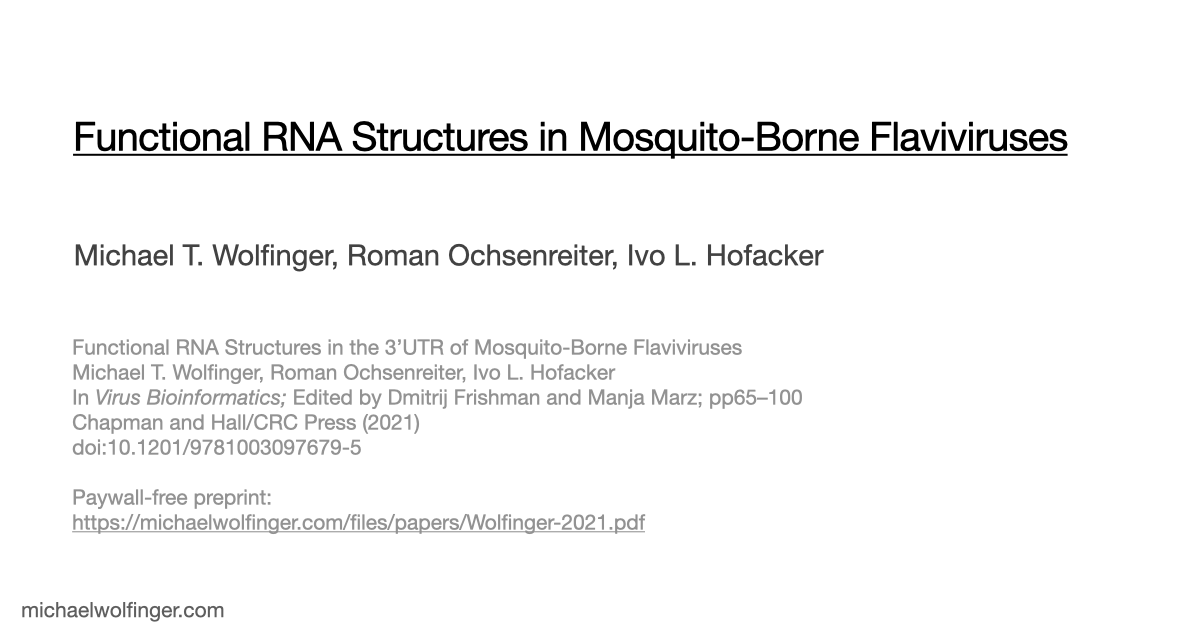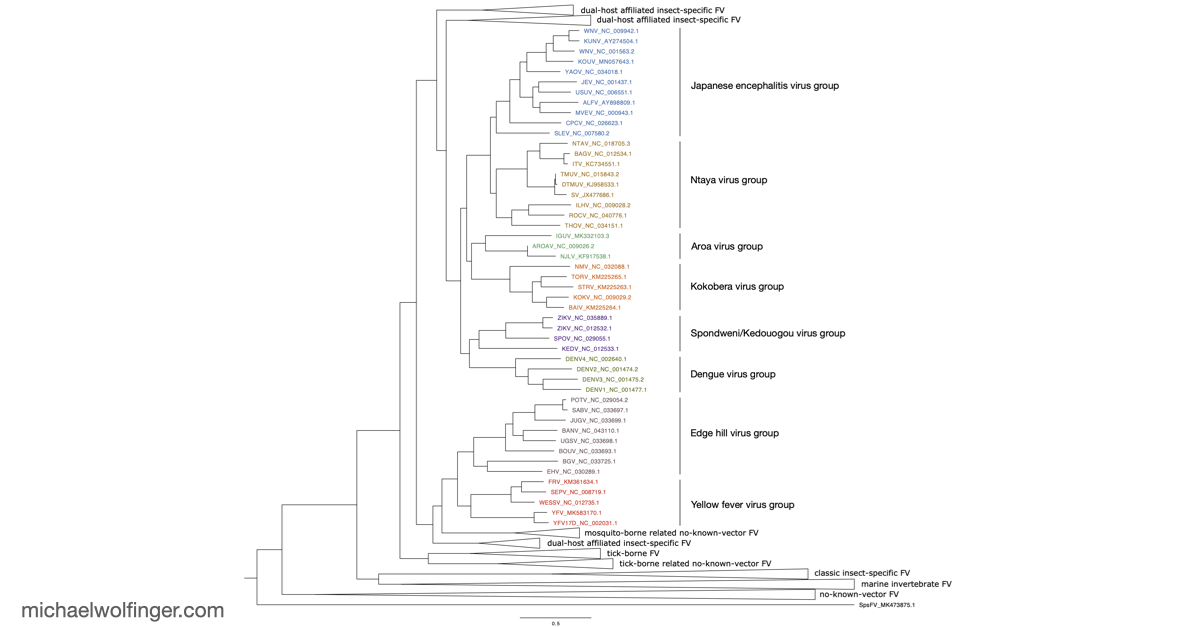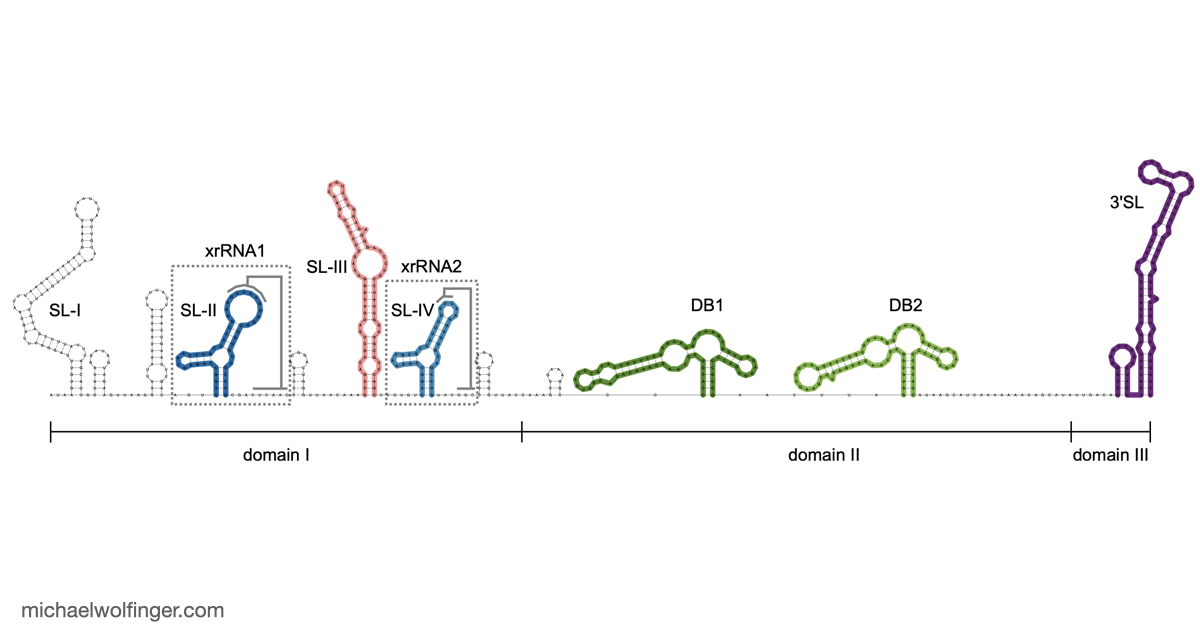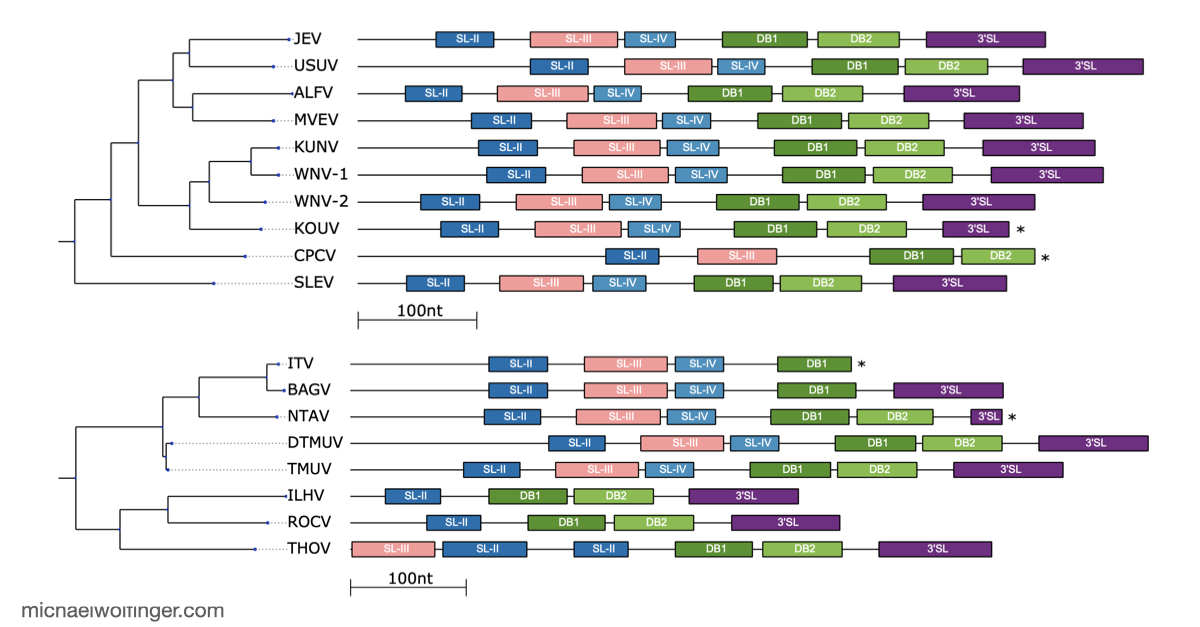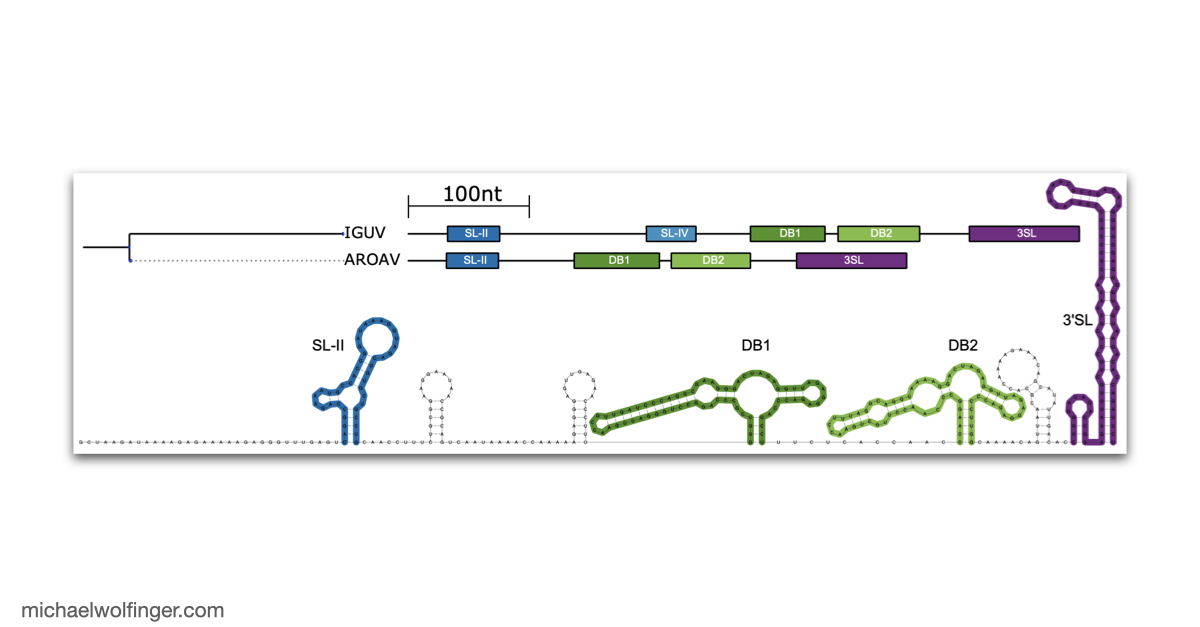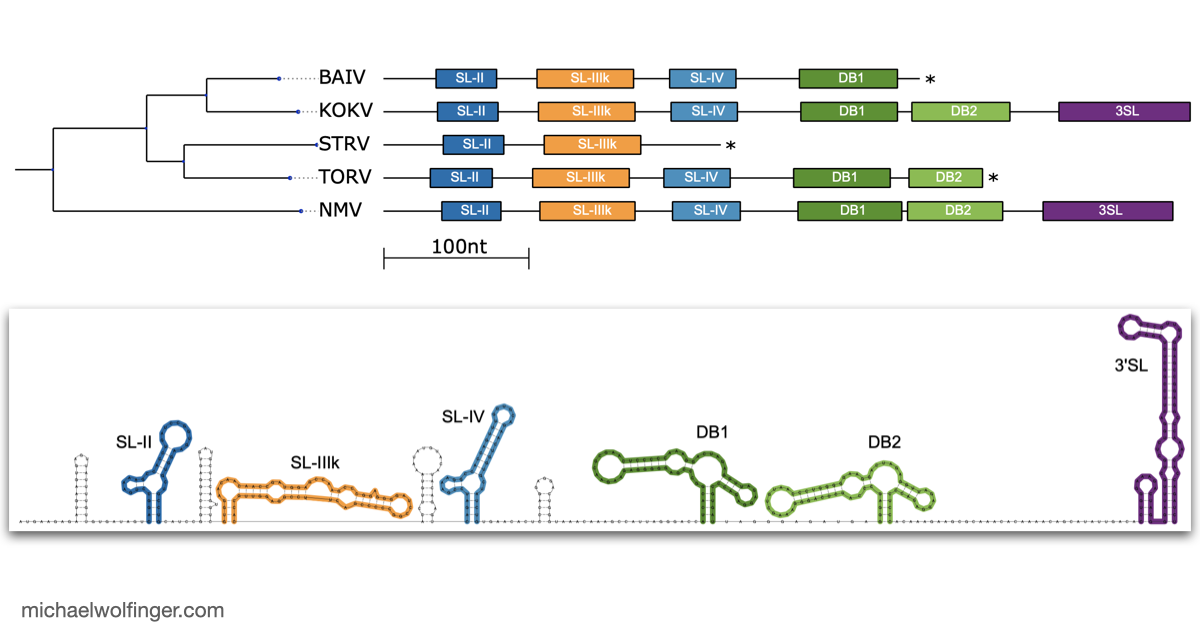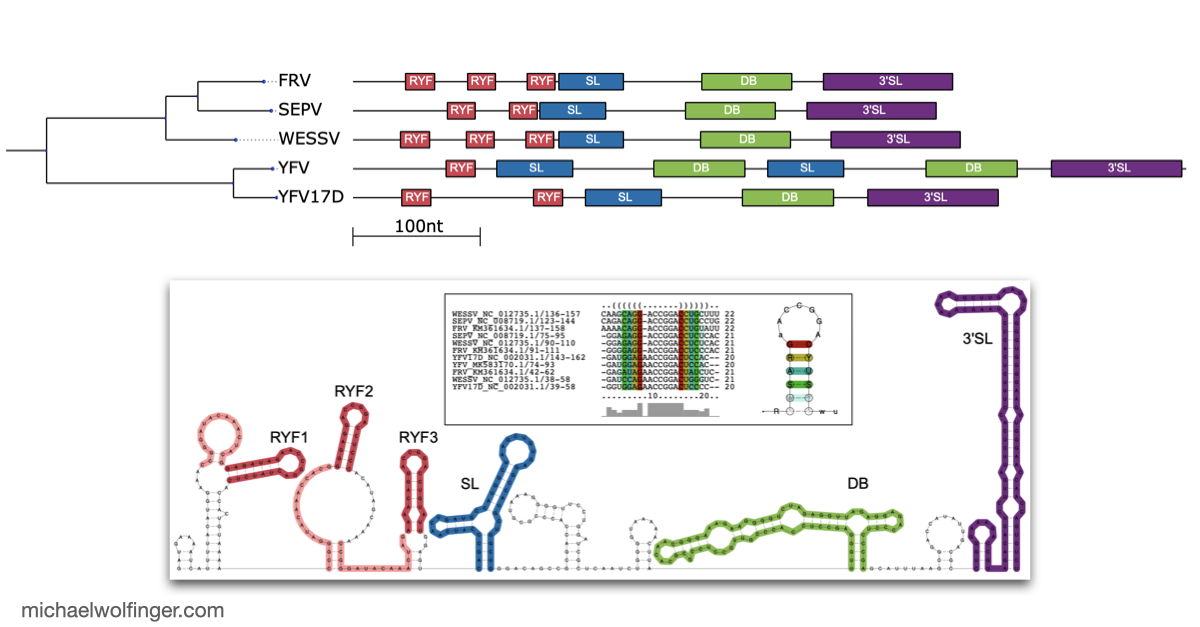Functional RNA structures in the 3'UTR of Mosquito-Borne Flaviviruses
The 3'UTR of Mosquito-Borne Flaviviruses (MBFVs) contain evolutionarily conserved functional elements, such as exoribonuclease-resistant RNAs (xrRNAs), dumbbell elements or terminal stem-loops. In this contribution we describe, annotate, and compare these elements within different serological groups of MBFVs
Mosquito-Borne Flaviviruses cause millions of infections in humans and animals every year, rendering MBFVs a major public health threat. Flaviviruses are enveloped, non-segmented single-stranded (+)-sense RNA viruses and consist of a single 5’-capped, non-polyadenylated RNA of approximately 10-12 kilobases in length, referred to as gRNA. The gRNA encodes a single open reading frame (ORF), which is flanked by highly structured untranslated regions (UTRs). The flavivirus UTRs are crucially involved in the regulation of the viral life cycle, and mediate processes such as genome cyclization, replication, and immune escape.
Mechanistically, these are regulated by evolutionarily conserved RNA elements in the flavivirus UTRs. An example are exoribonuclease-resistant RNAs (xrRNAs), that stall endogenous host exoribonucleases like Xrn1, thereby prohibiting further Xrn1 progression towards the viral 3’ end and thus conferring quantitative protection of downstream nucleotides. While xrRNAs are among the best studied viral non-coding RNAs (ncRNAs), MBFVs harbor many conserved RNAs of unknown function in their UTRs.
To get a better picture and understanding of RNA structure conservation in MBFVs, we report here the results of a comparative genomics screen in the 3'UTR of all known Mosquito-Borne Flaviviruses.
Figures and Data
Citation
Functional RNA Structures in the 3’UTR of Mosquito-Borne Flaviviruses
Michael T. Wolfinger, Roman Ochsenreiter, Ivo L. Hofacker
In Virus Bioinformatics, edited by Dmitrij Frishman and Manja Marz, pp65–100. Chapman and Hall/CRC Press (2021) | doi: 10.1201/9781003097679-5 | PDF | Figures
See Also
Functional RNA Structures in the 3’UTR of Tick-Borne, Insect-Specific and No Known Vector Flaviviruses
Roman Ochsenreiter, Ivo L. Hofacker, Michael T. Wolfinger
Viruses 11:298 (2019) | doi:10.3390/v11030298 | PDF | Figures
Evolutionary traits of Tick-borne encephalitis virus: Pervasive non-coding RNA structure conservation and molecular epidemiology
Lena S. Kutschera, Michael T. Wolfinger
Virus Evol. (8):1 veac051 (2022) | doi:10.1093/ve/veac051 | PDF | Figures
